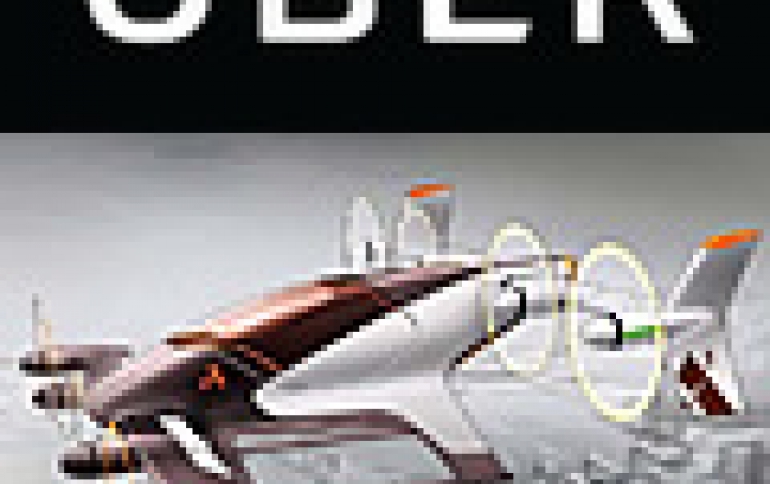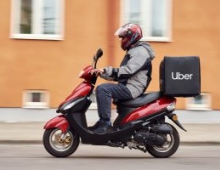
Uber Lays Out Plans Future of On-Demand Urban Air Transportation
Uber envisions a future a network of small, electric aircraft that take off and land vertically (called VTOL aircraft for Vertical Take-off and Landing, which will enable rapid transportation between suburbs and cities and, ultimately, within cities. Uber has published a white paper detailing its plan to launch an "on demand aviation" service called Uber Elevate.
The ambitious project will allow you to travel from San Francisco’s Marina to work in downtown San Jose - a drive that would normally occupy the better part of two hours - in only 15 minutes.

On-demand aviation has the potential to radically improve urban mobility, giving people back time lost in their daily commutes.
The development of infrastructure to support an urban VTOL network will likely have significant cost advantages over heavy-infrastructure approaches such as roads, rail, bridges and tunnels. It has been proposed that the repurposed tops of parking garages, existing helipads, and even unused land surrounding highway interchanges could form the basis of an extensive, distributed network of "vertiports" (VTOL hubs with multiple takeoff and landing pads, as well as charging infrastructure) or single-aircraft "vertistops" (a single VTOL pad with minimal infrastructure).
Furthermore, VTOLs do not need to follow fixed routes, which typically expose travelers to delays.
 Ubder says that technology advances have made it practical to build this new class of VTOL aircraft. The closest equivalent technology in use today is the helicopter, but helicopters are too noisy, inefficient, polluting, and expensive for mass-scale use. VTOL aircraft will make use of electric propulsion so they have zero operational emissions and will likely be quiet enough to operate in cities without disturbing the neighbors. These VTOL designs will also be safer than today’s helicopters because VTOLs will not need to be dependent on any single part to stay airborne and will ultimately use autonomy technology to reduce operator error.
Ubder says that technology advances have made it practical to build this new class of VTOL aircraft. The closest equivalent technology in use today is the helicopter, but helicopters are too noisy, inefficient, polluting, and expensive for mass-scale use. VTOL aircraft will make use of electric propulsion so they have zero operational emissions and will likely be quiet enough to operate in cities without disturbing the neighbors. These VTOL designs will also be safer than today’s helicopters because VTOLs will not need to be dependent on any single part to stay airborne and will ultimately use autonomy technology to reduce operator error.
Uber says that in the long-term, VTOLs will be an affordable form of daily transportation for the masses, even less expensive than owning a car.
Initially, of course, VTOL vehicles are likely to be very expensive, but because the ridesharing model amortizes the vehicle cost efficiently over paid trips, the high cost should not end up being prohibitive to getting started, Uber says.
The vision portrayed above is ambitious, but Ubder believes it is achievable in the coming decade if all the key actors in the VTOL ecosystem-regulators, vehicle designers, communities, cities, and network operators - collaborate effectively.
The most critical challenges to address in order to bring on-demand urban air transportation to market is the
Certification Process from aviation authorities (US Federal Aviation Administration, European Aviation Safety Agency); the existing battery technology (capacity, charging time, cycle life); vehicle efficiency (utilization of distributed electric propulsion technology); vehicle performance and reliability (vehicle designs for 150–200 mph cruise speeds and maximum one-minute take-offs and landings, robustness in varied weather conditions); Air Traffic Control (new ATC systems will be needed - low-altitude operations being managed through a server request-like system that can deconflict the global traffic, while allowing UAVs and VTOLs to self-separate any potential conflicts with VFR-like rules); cost and affordability; safety (VTOL aircraft need to be safer than driving a car on a atalities-per-passenger-mile basis); aircraft Noise (vehicles should effectively blend into background noise); Vertiport/Vertistop Infrastructure in Cities; and Pilot Training.
Uber's paper delves into these challenges for achieving a successful VTOL market, with an eye to surmounting them as quickly as possible, as well as our view on rider experience requirements.
"Our intent here is to contribute to the nascent but growing VTOL ecosystem and to start to play whatever role is most helpful to accelerate this industry’s development," Ubder says.
"Rather than manufacture VTOL hardware ourselves, we instead look to collaborate with vehicle developers, regulators, city and national governments, and other community stakeholders, while bringing to the table a very fertile market of excited consumers and a clear vehicle and operations use case."





















